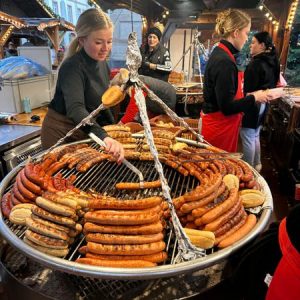If you were asked to think of a country with a riviera, alps, fjord and canyon, I suspect few would suggest Albania. The fact so little is known about the country is not surprising, as from the mid-1940s to the early 1990s when it was under communist rule, it was virtually closed to the world. However, it’s shaking off its secretive past and our four-week tailor-made trip, allowed us to learn about its rich history: from the Illyrians, Romans and Ottomans through to the gaining of independence in 1912.
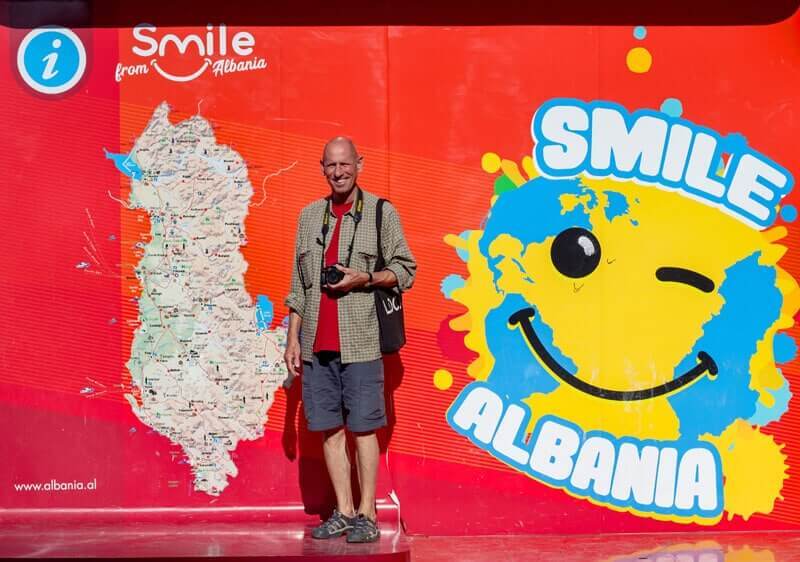 There were three names we frequently encountered: Skanderbeg, the national hero who led the rebellion against the Ottomans; Ismael Qemali, the principal author of the Declaration of Independence and more recently, Enver Hoxha, the communist leader.
There were three names we frequently encountered: Skanderbeg, the national hero who led the rebellion against the Ottomans; Ismael Qemali, the principal author of the Declaration of Independence and more recently, Enver Hoxha, the communist leader.
Although the main religion is Islam, few women wear the hijab and pork was widely available. Possibly because religion was banned from 1976, Albanians are religiously tolerant and mixed marriages common. We often found Christian Orthodox churches and monasteries located near Catholic Cathedrals and mosques, although Bektashi Teqe, were always high on hills.
The spelling of places was confusing, for example, Durresi/Durres and Gjirokastra/Gjirokaster.
Accommodation
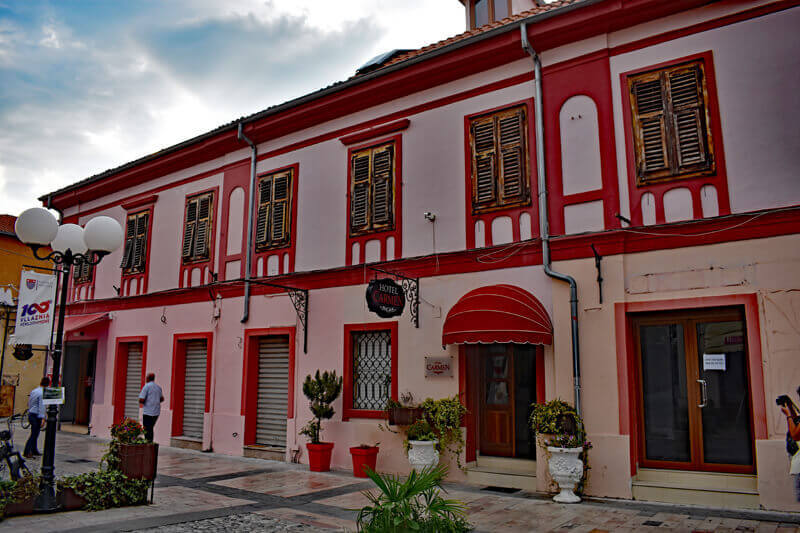 We stayed in 10 hotels, deliberately choosing smaller places which inevitably had more atmosphere, but often lacked a restaurant or bar. Standards varied considerably, but most were comfortable, albeit with quirks. As tourism is still developing, websites are few and far between and when checking in, the key was often simply handed over without paperwork. In-room tea and coffee making facilities were rare and we quickly learned to ask for our room to be serviced. We also found that no matter what time breakfast started, if we went down on the dot, someone was just finishing.
We stayed in 10 hotels, deliberately choosing smaller places which inevitably had more atmosphere, but often lacked a restaurant or bar. Standards varied considerably, but most were comfortable, albeit with quirks. As tourism is still developing, websites are few and far between and when checking in, the key was often simply handed over without paperwork. In-room tea and coffee making facilities were rare and we quickly learned to ask for our room to be serviced. We also found that no matter what time breakfast started, if we went down on the dot, someone was just finishing.
Food and drink
Eating out could be incredibly cheap, if choosing wisely and avoiding more expensive steaks and fish. English was widely spoken, and many had English menus, although we rarely encountered one for drinks. Dinner usually began with salad, but rarely ended with pudding. Portion sizes were large, and we often shared a main course. We paid on average £10 to £15 for a simple meal for two with wine and water. Service charge was never included, but a small tip was always appreciated.
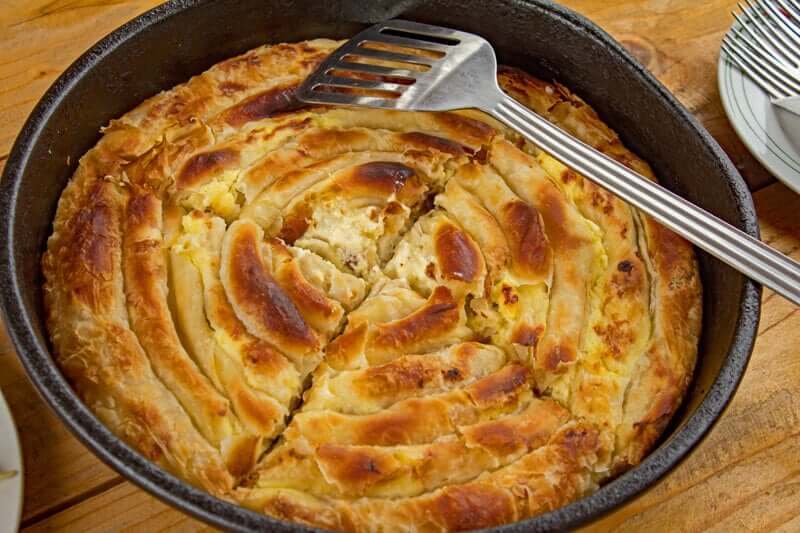 Cuisine was influenced by neighbouring countries. In Vlore, only 75km from Italy by sea, pasta and pizza were ubiquitous, whilst near the southern border with Greece, grills and gyros reigned supreme. The national cuisine also featured grills, but we also enjoyed fërgesë (baked peppers, tomatoes and feta cheese), borek (filo parcels filled with cheese and spinach), flia (layers of crepes brushed with cream and served with sour cream) and in Gjirokastra, qifqi (fried rice patties).
Cuisine was influenced by neighbouring countries. In Vlore, only 75km from Italy by sea, pasta and pizza were ubiquitous, whilst near the southern border with Greece, grills and gyros reigned supreme. The national cuisine also featured grills, but we also enjoyed fërgesë (baked peppers, tomatoes and feta cheese), borek (filo parcels filled with cheese and spinach), flia (layers of crepes brushed with cream and served with sour cream) and in Gjirokastra, qifqi (fried rice patties).
House wine was passable, although sometimes benefitting from a splash of sparkling water, with a half-litre costing around 400 Lek/£2.90. Locally brewed Korça beer was light and refreshing and raki, a strong fruit brandy, was served at any time of day. Albanians love coffee and can sit for hours chatting over a single espresso, always served with a complimentary glass of water, or in smarter places, a chargeable bottle.
Sights
We saw sights from every period of Albania’s history, with the ruins of Butrint and Apollonia being particularly well preserved. Others, such as those at Antigonea Archaeological Park, required more imagination than I possess.
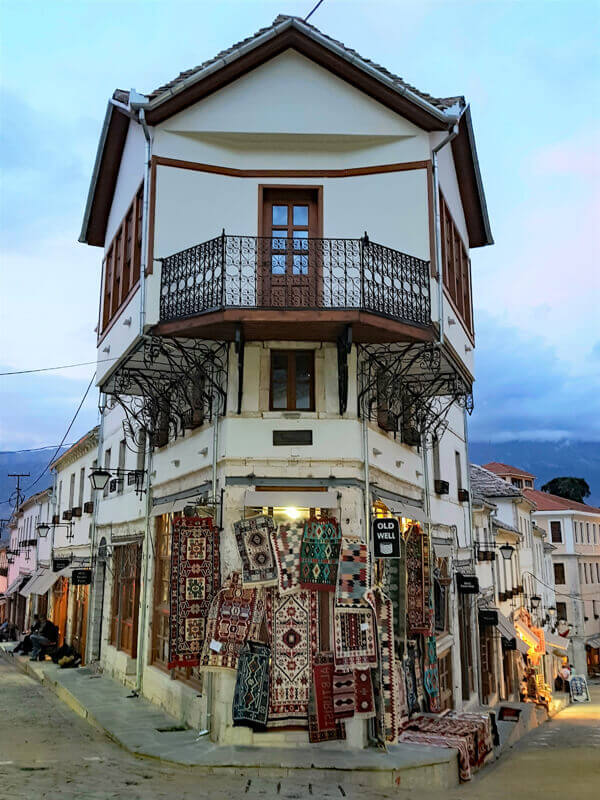 Beautiful stone bridges are a legacy of the Ottoman era, and the town of Gjirokastra had a wonderful, albeit touristy bazaar. Unfortunately, the cobbled streets were in the process of being repaired and because tourism is so new, we also found many religious buildings and sights, scaffolding clad. Ethnographic museums also gave a fascinating glimpse into everyday life, with their winter and summer terraces and separate rooms for men and women.
Beautiful stone bridges are a legacy of the Ottoman era, and the town of Gjirokastra had a wonderful, albeit touristy bazaar. Unfortunately, the cobbled streets were in the process of being repaired and because tourism is so new, we also found many religious buildings and sights, scaffolding clad. Ethnographic museums also gave a fascinating glimpse into everyday life, with their winter and summer terraces and separate rooms for men and women.
Hill top castles abound in Albania. Those at Kruja and Berat are still inhabited and were a real highlight, whilst the walls at Lezha were well preserved. Rozafa Castle is associated with the heart- breaking legend of a young mother being cemented into its walls.
Less explored areas of natural beauty include the Osumi Canyon in the south, and the northern Albanian Alps of Valbone National Park. Here we hiked and saw the simple, but very hard way of life lived by the shepherds who provided warm hospitality. To reach the park, we took the Komani Ferry through, what is often regarded as the Albanian fjords.
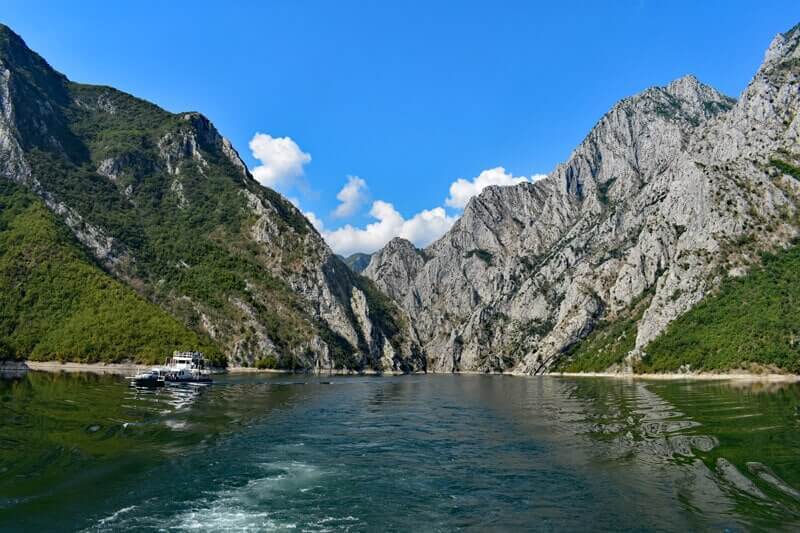 We visited numerous monasteries and religious buildings and became very familiar with the architecture of Christian Orthodox Churches. Many were isolated, requiring key holders to be tracked down. Their frescoes, dating back centuries, were in varying stages of preservation depending on whether the communists had designated them a cultural monument, whitewashed or simply defaced them. Two unexpected highlights, turned out to be the National Museum of Medieval Art in Korça and Onufri Museum in Berat Castle, which was dedicated to the master of Albanian religious art
We visited numerous monasteries and religious buildings and became very familiar with the architecture of Christian Orthodox Churches. Many were isolated, requiring key holders to be tracked down. Their frescoes, dating back centuries, were in varying stages of preservation depending on whether the communists had designated them a cultural monument, whitewashed or simply defaced them. Two unexpected highlights, turned out to be the National Museum of Medieval Art in Korça and Onufri Museum in Berat Castle, which was dedicated to the master of Albanian religious art
For a welcome break from sightseeing, we stayed on the Albanian Riviera at Saranda. The weather in early October was good enough for sunbathing, but we also took a 30-minute fast ferry to neighbouring Corfu Town. This brought back memories of our visit to the Greek island nearly 30 years ago, when we’d seen Albania’s bleak outline.
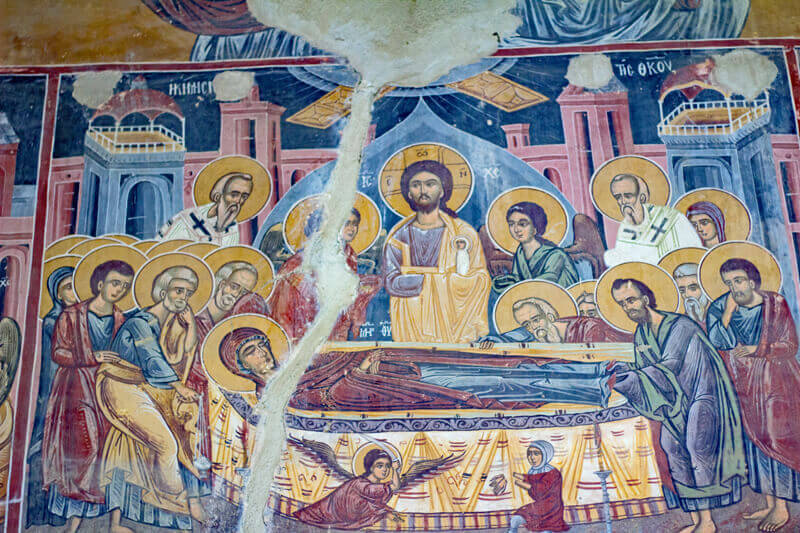 However, for me, the most interesting facet of the country, was its recent communist past. On our tour, we saw concrete bunkers of varying sizes: not surprising as around 170,000 were estimated to have been built between 1975 and 1983. In the capital Tirana, a number of exhibitions and museums allowed us to glimpse into life under communism: religious buildings were used for storage and turned into sports venues and cinemas, clerics were murdered and citizens thought to have committed offences against the state, were persecuted, imprisoned and tortured. Tirana was easy to walk around, and with lots of less dark sights, and flight times of around 3 hours, it’s sure to become a popular city break in the future.
However, for me, the most interesting facet of the country, was its recent communist past. On our tour, we saw concrete bunkers of varying sizes: not surprising as around 170,000 were estimated to have been built between 1975 and 1983. In the capital Tirana, a number of exhibitions and museums allowed us to glimpse into life under communism: religious buildings were used for storage and turned into sports venues and cinemas, clerics were murdered and citizens thought to have committed offences against the state, were persecuted, imprisoned and tortured. Tirana was easy to walk around, and with lots of less dark sights, and flight times of around 3 hours, it’s sure to become a popular city break in the future.
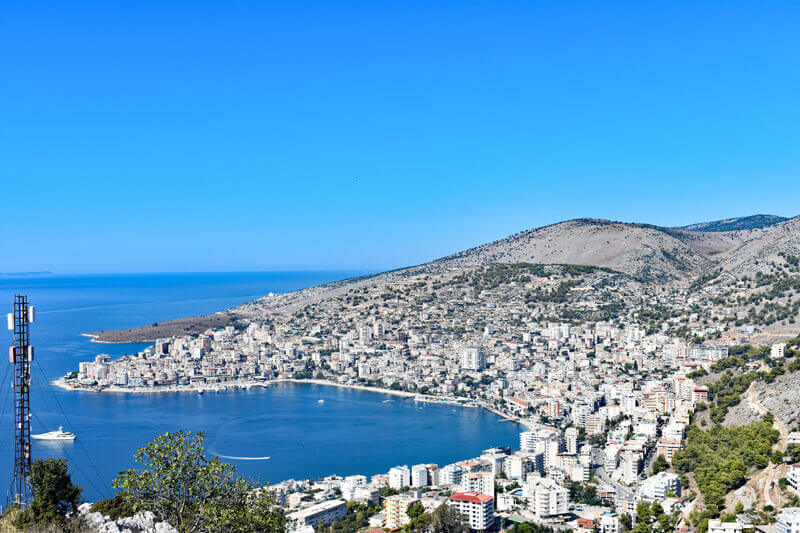 Whilst we were in the country, a small earthquake hit the capital, although thankfully we were some distance away. However, a much stronger earthquake hit Durres six weeks after we returned home, with the loss of numerous lives.
Whilst we were in the country, a small earthquake hit the capital, although thankfully we were some distance away. However, a much stronger earthquake hit Durres six weeks after we returned home, with the loss of numerous lives.
Bearing in mind that tourism is relatively new in Albania, it has come a long way, but there can be a degree of frustration with poor roads and you need to pack a sense of humour and stamina. However, it is worth visiting now, before it loses its rustic charm.
Finally, no article on Albania would be complete without mentioning Sir Norman Wisdom, who had a huge following and was regarded as a figure of hope during the country’s most brutal years. As his song “Big in Albania” goes, ‘they’ve got Norman Mania’. Do not watch this YouTube video, unless your prepared to be singing the song, written by Sir Tim Rice, for weeks.
Silver Travel Advisor recommends Cox & Kings.

